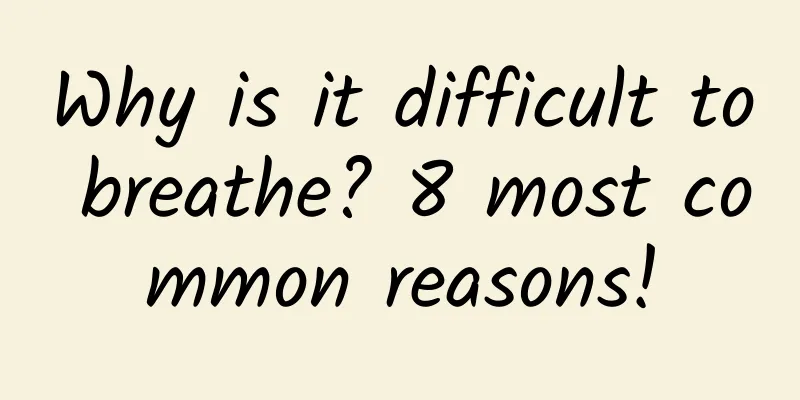How is bronchitis treated?

|
Bronchitis is a common respiratory disease in daily life. Due to bacteria or the influence of external air, inflammation of the respiratory tract can easily cause bronchitis. People with bronchitis should be treated in time. In addition, they should also pay more attention to their diet and eat more fresh vegetables. Bronchitis treatment Diet adjustment The diet should be light and avoid spicy and meaty foods. You should quit smoking and drink more tea, because smoking can cause increased respiratory secretions, reflex bronchospasm, and difficulty in expectoration, which are conducive to the growth and reproduction of viruses and bacteria, further worsening chronic bronchitis. Tea contains theanolide, which can excite the sympathetic nerves, dilate the bronchi and relieve cough and asthma symptoms. Abdominal breathing Abdominal breathing can keep the airway open, increase lung capacity, reduce the onset of chronic bronchitis, and prevent the occurrence of emphysema and cor pulmonale. Specific method: When inhaling, try to make your abdomen bulge, and when exhaling, try your best to make your abdomen concave. Exercise 2-3 times a day, 10-20 minutes each time. Keep exercising Improve cold resistance and body resistance. In winter, it is helpful to wash your face and hands with cold water, and massage the soles of your feet and palms before going to bed. In addition, you can choose medical exercises, Tai Chi and other programs according to your own physical condition. Persisting in exercising can improve the body's disease resistance. The amount of activity should be moderate without obvious shortness of breath, accelerated heartbeat and excessive fatigue. Infection Control In the acute stage, follow the doctor's advice and choose effective antibacterial drugs for treatment Symptoms of bronchitis Acute bronchitis The early stages of acute bronchitis often present with symptoms of upper respiratory tract infection, and patients usually have clinical manifestations such as nasal congestion, clear runny nose, sore throat and hoarseness. The systemic symptoms are relatively mild, but may include low fever, chills, general fatigue, itchy throat, irritating cough and pain behind the sternum. In the early stage, the amount of sputum is not much, but it is not easy to cough up. After 2 to 3 days, the sputum may change from mucous to mucopurulent. Coughing may be aggravated or induced by the patient catching a cold or inhaling cold air or irritating gases. Patients often have a more severe cough in the morning or at night. The cough may also be paroxysmal or sometimes persistent. Severe coughing is often accompanied by nausea, vomiting, and chest and abdominal muscle pain. If accompanied by bronchospasm, there may be wheezing and shortness of breath. Generally speaking, the course of acute bronchitis is self-limited to a certain extent, and systemic symptoms can subside within 4 to 5 days, but the cough can sometimes last for several weeks. Dry rales may sometimes be found during physical examination, which disappear after coughing; moist rales may occasionally be heard at the lung base, and wheezing may be heard when accompanied by bronchospasm. Usually the white blood cell count is normal, and a chest x-ray is unremarkable. Chronic bronchitis Chronic bronchitis refers to a condition in which the patient suffers from chronic cough and sputum production for more than three months each year for two consecutive years, excluding other causes of chronic cough. It is not necessarily accompanied by persistent airflow limitation. (1) Long-term, recurrent, and gradually worsening cough is a prominent manifestation of this disease. In mild cases, the disease only occurs in winter and spring, especially in the early morning before and after getting up, and there is less coughing during the day. In summer and autumn, the cough is relieved or disappears. Severe patients cough in all seasons, which is aggravated in winter and spring. They cough day and night, especially in the morning and evening. (2) The sputum is usually white, mucus and foamy. It is more common in the morning and is often difficult to cough up due to its viscosity. After infection or cold, symptoms rapidly worsen, sputum volume and viscosity increase, or it may become yellow purulent sputum or be accompanied by wheezing. Occasionally, there is blood in the sputum due to severe coughing. (3) Asthma: When combined with respiratory tract infection, asthma (wheezing) symptoms may occur due to congestion and edema of the bronchiolar mucosa, sputum obstruction and bronchial lumen narrowing. The patient has a wheezing sound in the throat when breathing and a wheezing sound when auscultating the lungs. (4) Repeated infections: Recurrent respiratory infections are likely to occur during cold seasons or when the temperature changes suddenly. At this time, the patient's asthma worsens, the amount of sputum increases significantly and becomes purulent, accompanied by general fatigue, chills, fever, etc. There are moist sounds in the lungs and an increase in white blood cell count in the blood. Repeated respiratory tract infections are particularly likely to worsen the condition of elderly patients and must be given full attention. |
<<: What is the treatment for acne?
>>: Do you know the best treatment for mastitis?
Recommend
Common anorectal diseases
Anorectal diseases are a very common type of dise...
Why do my eyes hurt when I have a headache?
Headache is not a disease but it can be very pain...
How to treat bone cysts and what causes them
For children around 10 years old, if they experie...
Symptoms of viral hepatitis in the elderly
Viral hepatitis is a type of hepatitis, and for h...
Can I eat watermelon during confinement?
It is okay to eat some watermelon during the conf...
Side effects of chemotherapy
Chemotherapy is a relatively advanced treatment m...
Precautions after mole removal
Many people have moles on their faces and bodies....
What is sand dermatitis, what are the symptoms and how to treat it?
Many playgrounds have special sand piles for chil...
What is the cause of high triglycerides? Be careful, it may be a disease!
High triglycerides are hypertriglyceridemia, and ...
The harder a man's penis is, the more afraid his wife is
Toxins in the body have always been a headache fo...
Chinese medicine for treating rapid heartbeat
We all know that there are many types of heart di...
What are the complications and dangers of genital herpes?
The harm of genital herpes is quite great. If peo...
Nephrogenic diabetes insipidus
In fact, in many cases, our bodies have already e...
What Chinese medicine can remove freckles?
In this era of fast pace of life, life pressure i...
What is the dosage of Chuanxiong?
Chuanxiong is a traditional Chinese medicine that...









